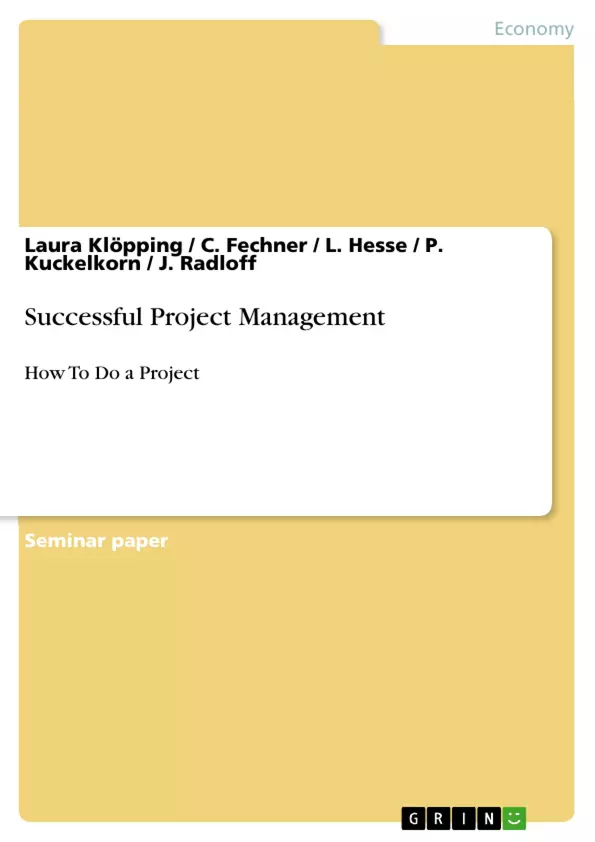Project Management has different phases in order to supervise, plan and navigate the project throughout the whole project life cycle. The goal of project management is the successful closing by supervising, planning and navigating the project despite all risks.
The following five steps will be explained throughout this project management manual:
Initiating
Planning
Executing
Controlling
Closing
Inhaltsverzeichnis (Table of Contents)
- Project Management
- What is Project Management?
- What is a Project?
- Defined beginning and end
- Specific time, cost, responsibilities and goals
- Initiating
- Defining the Project Scope
- Establishing Project Priorities
- Destination of the Project
- Kick-off Meeting
- Planning
- Structure a Project
- Time Planning
- Bar Chart Planning
- Network Planning
- Resource and Capacity Planning
- Benefits of the Capacity Planning
- Cost Planning
- Benefits of Cost Planning
- Approach for the production of the cost plan
- Risk Management Planning and Optimization
- Portfolio and SWOT Analysis
- Executing
- What is executing?
- The start of the project
- Project Management
- The project documentation
- Controlling
- What is controlling?
- Time Control
- Cost Control
- Quality Control
- Closing
- The Product Analysis
- Project Evaluation
- Closure of the Project
- List of References
- List of Figures
Zielsetzung und Themenschwerpunkte (Objectives and Key Themes)
This project management manual aims to provide a comprehensive overview of the key stages in project management, outlining best practices and practical approaches for successful project execution. It is designed for individuals involved in project management, offering a guide to navigate the project life cycle effectively.
- The different phases of project management
- Effective project initiation, including defining project scope, establishing priorities, and conducting kick-off meetings
- Planning techniques such as time planning, resource allocation, and cost planning
- The crucial role of executing and controlling the project
- Closing the project and evaluating its outcomes
Zusammenfassung der Kapitel (Chapter Summaries)
The manual begins by introducing the concept of project management, outlining its key phases and the importance of successful project closure. It then delves into the initiating phase, highlighting crucial steps like defining the project scope, setting priorities, and ensuring stakeholder alignment. The planning chapter provides a thorough guide to time planning, resource management, and cost planning, emphasizing the need for comprehensive planning and risk management. The executing and controlling phases are then explored, with a focus on the importance of efficient management, documentation, and monitoring.
Schlüsselwörter (Keywords)
The manual focuses on key concepts related to project management, including project initiation, planning, execution, controlling, and closing. It also addresses essential elements such as project scope, project priorities, time planning, resource allocation, cost planning, and risk management. The manual aims to equip readers with the necessary knowledge and tools for successful project management.
- Quote paper
- Laura Klöpping (Author), C. Fechner (Author), L. Hesse (Author), P. Kuckelkorn (Author), J. Radloff (Author), 2011, Successful Project Management, Munich, GRIN Verlag, https://www.grin.com/document/189357



